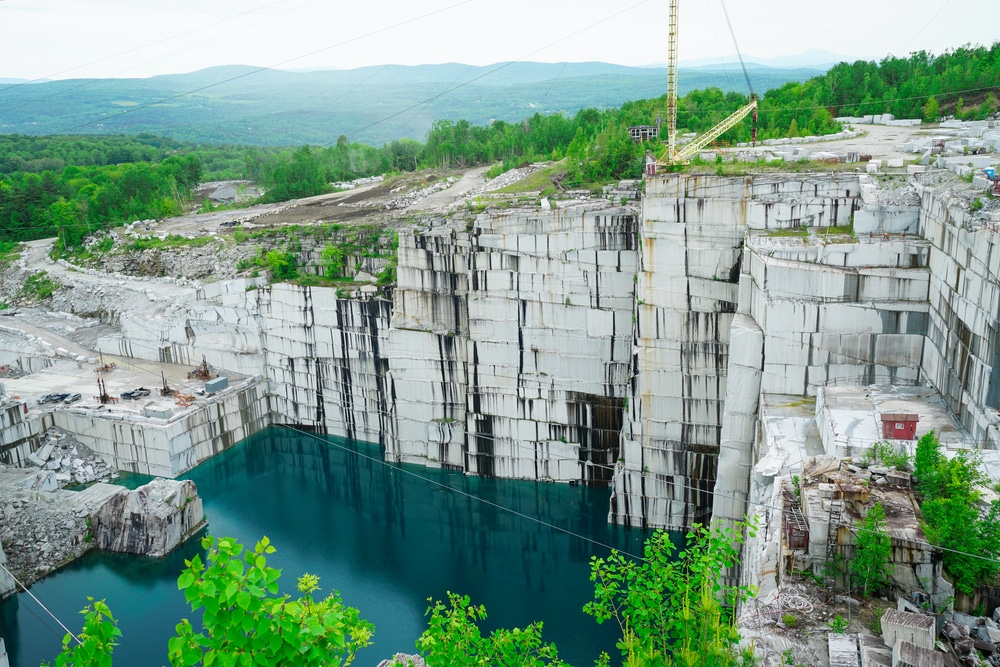Granite Quarries in South Africa Wonders: Discovering the Quarry Landscape
Granite Quarries in South Africa Wonders: Discovering the Quarry Landscape
Blog Article
Introducing the Mysteries of Granite Quarrying: Where Stamina and Beauty Meet
The globe of granite quarrying is a realm where the raw stamina of nature assembles with human artistry to produce frameworks that stand the test of time with an air of elegance. From the midsts of quarries to the thorough sprucing up in workshops, the process of changing granite into building marvels is a complicated dancing of custom and development. As we peer into the midsts of this old craft, we begin to reveal the concealed intricacies that shape the extremely essence of our developed setting.
The Beginnings of Granite Quarrying
In the record of building background, the beginnings of granite quarrying are shrouded in a tapestry of old craftsmanship and geological wonders. Dating back to old Egypt and Mesopotamia, the extraction of granite from quarries marked the beginning of a trip that would eventually cause the development of several of the world's most renowned frameworks.
Granite quarrying's origins can be mapped to the competent artisans who acknowledged the stone's sturdiness and visual appeal. Via a combination of primitive devices and large determination, these very early quarry employees uncovered granite blocks that would certainly become the building blocks of human beings.
As civilizations advanced, so did the strategies of quarrying granite. The Romans, renowned for their engineering prowess, established advanced methods for extracting granite to create monuments, temples, and roadways that stood the examination of time.
The tradition of these ancient quarrying methods remains to shape modern-day architecture, with granite continuing to be a symbol of toughness and sophistication in construction projects around the world. (granite quarries in south africa)
Devices of the Quarrying Trade
The evolution of granite quarrying techniques from ancient worlds to contemporary times highlights the crucial duty played by the tools of the quarrying sell forming the industry's techniques. In old times, quarrying devices were rudimentary, commonly consisting of blades, hammers, and wedges made from products like bronze or iron. These tools needed substantial manpower and time to essence granite blocks from quarries.

In addition, the introduction of pneumatic devices and high-powered machinery has actually significantly minimized the physical labor needed in quarrying procedures, enhancing worker safety and performance. As the More hints quarrying sector remains to introduce, the tools of the trade stay at the forefront of driving progression and shaping the future of granite extraction.
Drawing Out Blocks of Granite
Using precision equipment and progressed methods, the extraction of granite blocks from quarries has actually read the full info here become a sophisticated process in the modern-day quarrying industry. Controlled blowing up methods are then utilized to break apart the granite right into manageable areas.

Polishing and Ending Up Methods
To achieve a flawless surface area on granite blocks, knowledgeable craftsmens utilize a collection of precise sprucing up and ending up strategies. After the first removal and forming processes, the granite obstructs undergo a detailed sprucing up stage to enhance their natural charm and sturdiness.
Along with sprucing up, ending up strategies are applied to further fine-tune the granite's appearance. These methods might include flaming, refining, or cleaning, each offering distinct structures and finishes to suit various visual choices. Flaming, as an example, involves subjecting the granite surface to high temperature levels to produce a rough, textured coating, ideal for outdoor applications where slip-resistance is essential. Honing, on the various other hand, offers a matte finish that is smooth to the recommended you read touch, ideal for indoor countertops and flooring. By meticulously picking and using these brightening and completing techniques, artisans can transform raw granite blocks into beautiful items that showcase both strength and sophistication.

Ecological Effect and Sustainability
With the growing emphasis on ecological consciousness in the industry, granite quarrying techniques are increasingly looked at for their influence on natural deposits and long-lasting sustainability. Quarrying for granite can have substantial environmental effects. The removal procedure typically entails the usage of heavy equipment, nitroglycerins, and big quantities of water, bring about habitat destruction, soil disintegration, and water air pollution. In addition, the transport of granite from quarries to processing facilities generates carbon discharges, better adding to ecological destruction. granite quarries in south africa.
To minimize these influences and make sure sustainability in granite quarrying, sector stakeholders are taking on various actions. Executing innovative technologies to lower power consumption and water use, redeeming quarried land for environmental reconstruction, and advertising responsible sourcing methods are some techniques being employed. Certifications such as the Woodland Stewardship Council (FSC) and the Leadership in Energy and Environmental Layout (LEED) help customers determine eco pleasant granite items.
Verdict
To conclude, granite quarrying is a procedure that calls for specialized devices and methods to extract blocks of granite and polish them to a high level of surface. While the environmental influence of quarrying can be substantial, initiatives are being made to improve sustainability techniques in the industry. Generally, granite quarrying is a delicate balance in between harnessing the strength and sophistication of this all-natural stone while minimizing its impact on the atmosphere.
Report this page